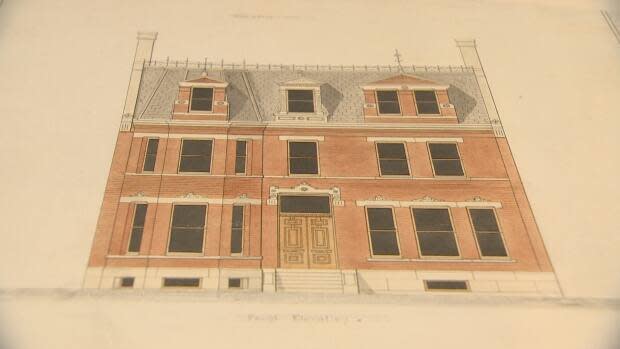Art of the archives: Hidden history revealed in new Beaverbrook exhibit

A giant map of the Saint John River is laid out on a table in the Beaverbrook Art Gallery in Fredericton.
The map is close to six feet long, and is so big that the gallery had to build a new table to display it.
The map — which was drawn as part of an 1826 survey of the Saint John River — meticulously details the river from Fredericton to Grand Falls.
"It's an incredibly detailed look at every bend in the river. It's all hand drawn and hand-coloured with watercolour," said Josh Green, manager of the Special Media Unit at the Provincial Archives of New Brunswick.
WATCH | Witness New Brunswick's fascinating visual records:
In addition to the natural topography the map marks all the churches and taverns dotted along the river.
When this map was created, it was never intended to be displayed in an art gallery.
However, the map — along with a collection of often quirky visual artifacts from the Provincial Archives of New Brunswick — is on display at the Beaverbrook Art Gallery, as part of an exhibit that is, fittingly, called ARTchives.
Finding 'documentary art'
Visitors will find artifacts dating back to the late 18th century: sketches, architectural drawings, political cartoons, labels, the original drawing for the New Brunswick flag, and even plans for the Bricklin, the famous sportscar with the gull-wing doors made in New Brunswick in the Seventies.
The items were pulled from boxes in the repository of the archives and are what Green and other archivists call "documentary art."
That can mean hand-crafted or printed "documents which speak to the political or social atmosphere of a place and time," said Green. "It's very broad and vague, but for us it meant we could start considering almost everything."

Considering the possibilities — the items on display came from a collection of more than 90,000 boxes — was a daunting task. Green said the provincial archives has been working in the background on the exhibit since just before the pandemic.
"I think we have one map here and there are thousands — maybe tens of thousands of maps — that we had to consider whittling it down from," said Green, who added that there were also thousands of architectural drawings and sketches to sift through.
John Leroux, manager of collections and exhibitions at the Beaverbrook Art Gallery, said they were pruning the exhibit until just before it opened. Some artifacts made it to the gallery before he realized there wouldn't be enough space to display them.
"We could have had a show that was 10 times this size but where would we have put it all? It was a matter of saying a lot with a little," said Leroux, who worked with the archivists on the exhibit.
'Everything is done by hand'
Leroux said a lot of pieces in the exhibit were chosen because they show just how many things used to be made by hand.
"Today we long for the hand-made, and things with integrity," said Leroux. "Everything [here] is done by hand. There's no machine in any of this."

He said the idea for this show came to him almost by accident. He was at the archives looking through government documents about the Centennial Building and found a rough sketch from artist Bruno Bobak that was a plan for one of the building's murals.
He hopes people who have the chance to visit the exhibit, which runs until May, also realize that the archives are much more than a collection of census forms and government records.
Hidden in all those boxes are works of art, just waiting to be rediscovered.

